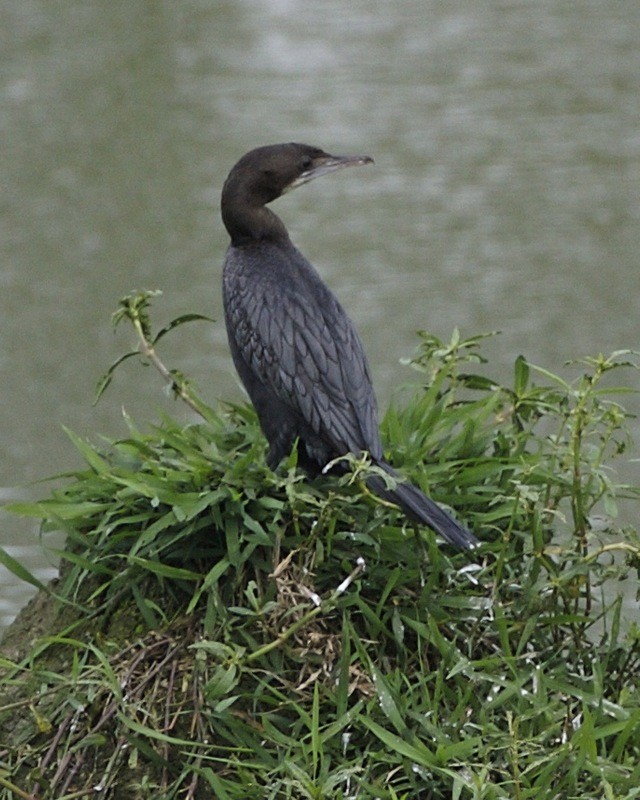Indian Cormorant
A species of Typical Cormorants and Shags Scientific name : Phalacrocorax fuscicollis Genus : Typical Cormorants and Shags
Indian Cormorant, A species of Typical Cormorants and Shags
Botanical name: Phalacrocorax fuscicollis
Genus: Typical Cormorants and Shags
Content
Description General Info
 Photo By Lip Kee , used under CC-BY-SA-2.0 /Cropped and compressed from original
Photo By Lip Kee , used under CC-BY-SA-2.0 /Cropped and compressed from original Description
This medium-sized bronze brown cormorant is scalloped in black on the upper plumage, lacks a crest and has a small and slightly peaked head with a long narrow bill that ends in a hooked tip. The eye is blue and bare yellow facial skin during the non-breeding season. Breeding birds have a short white ear tuft. In some plumages it has a white throat but the white is restricted below the gape unlike in the much larger great cormorant. Sexes are similar, but non-breeding adults and juveniles are browner. 
Size
63 cm
Colors
Brown
Black
Gray
Nest Placement
Tree
Feeding Habits
Indian Cormorant primarily consumes fish, often hunting cooperatively in groups. They employ coordinated diving techniques to corral prey, demonstrating sophisticated feeding behaviors and strategies unique to their species.
Habitat
Indian Cormorant predominantly resides in a variety of aquatic environments such as freshwater and marine habitats, including inland rivers, large wetlands, estuaries, and mangrove ecosystems. They are prevalent in subtropical regions, especially across peninsular territories and foothills, but avoid the open coast. Indian Cormorant's creates nesting colonies in trees, often situated directly over water bodies, and is known to be a sociable species, commonly fishing in groups.
Dite type
Piscivorous
General Info
Feeding Habits
Bird food type
Behavior
The breeding season is July to February but depends on rainfall and water conditions. In northern India, they breed from July to February and in Sri Lanka, between November and February. The nest is a platform of twigs placed in the forks of partially submerged trees or those growing on islands. The nests are placed in close proximity to those of other Indian cormorants, storks or waterbirds in dense colonies, often with several tiers of nests. The usual clutch is three to five eggs which are bluish green and with a chalky surface. The Indian cormorant makes short dives to capture fish and a group will often fish communally, forming a broad front to drive fish into a corner. An echinostomatid parasite has been described from Sindh from this species. 
Distribution Area
This cormorant fishes gregariously in inland rivers or large wetlands of peninsular India and northern part of Sri Lanka. It also occurs in estuaries and mangroves but not on the open coast. They breed very locally in mixed species breeding colonies. They extend north-east to Assam and eastward into Thailand, Burma and Cambodia. 
Species Status
Not globally threatened.